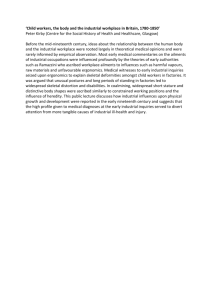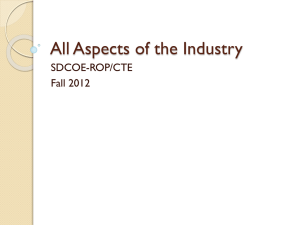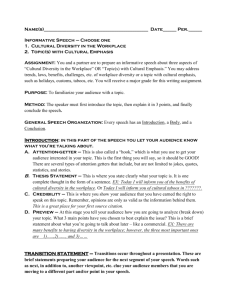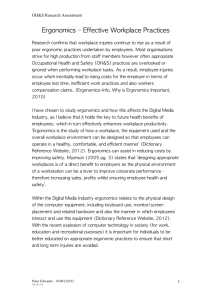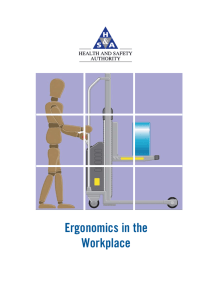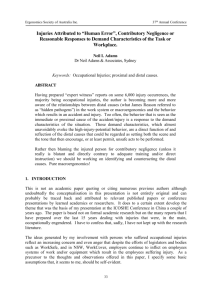Work Design Interventions - jen
advertisement
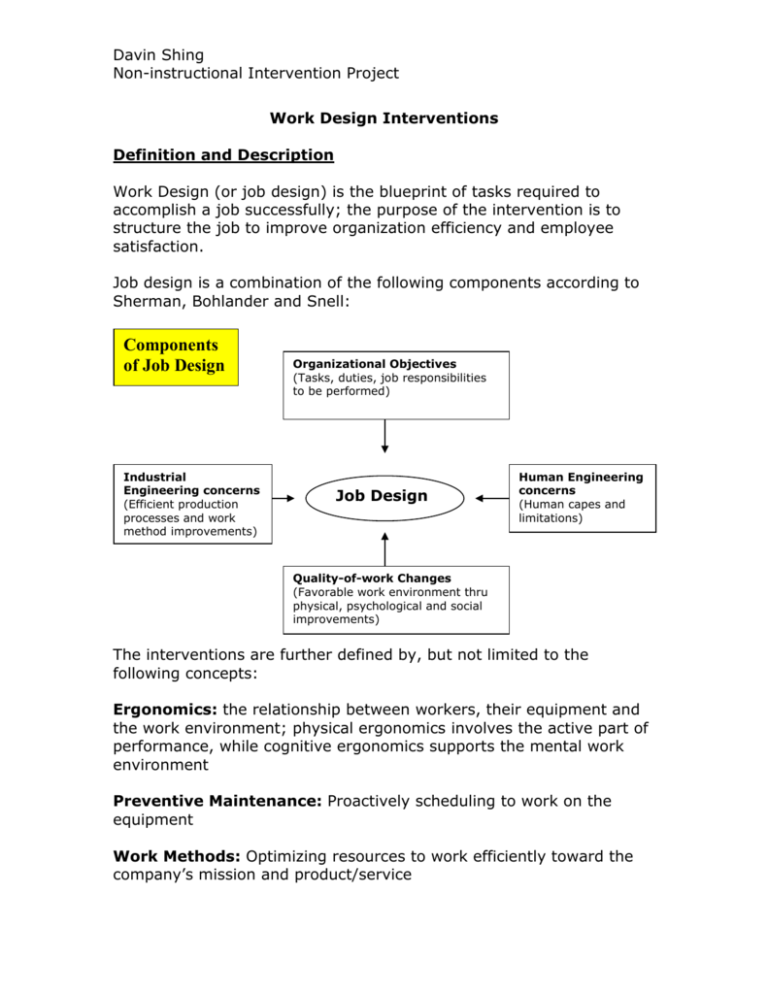
Davin Shing Non-instructional Intervention Project Work Design Interventions Definition and Description Work Design (or job design) is the blueprint of tasks required to accomplish a job successfully; the purpose of the intervention is to structure the job to improve organization efficiency and employee satisfaction. Job design is a combination of the following components according to Sherman, Bohlander and Snell: Components of Job Design Industrial Engineering concerns (Efficient production processes and work method improvements) Organizational Objectives (Tasks, duties, job responsibilities to be performed) Job Design Human Engineering concerns (Human capes and limitations) Quality-of-work Changes (Favorable work environment thru physical, psychological and social improvements) The interventions are further defined by, but not limited to the following concepts: Ergonomics: the relationship between workers, their equipment and the work environment; physical ergonomics involves the active part of performance, while cognitive ergonomics supports the mental work environment Preventive Maintenance: Proactively scheduling to work on the equipment Work Methods: Optimizing resources to work efficiently toward the company’s mission and product/service Davin Shing Non-instructional Intervention Project Value Engineering: The redesigning of parts, products, processes or services in an effort to meet customer needs and reduce costs Safety Engineering: Maintaining a safe work environment and meeting OSHA requirements; accident prevention Quality: (control, management and assurance) a system of values, concepts and methods for maximizing value. It involves evaluating the quality of performance, comparing actual performance to quality goals and then acting on the differences Continuous Improvement: Doing the job right the first time; the continuous improvements made to a company’s inputs, processes and out puts Interface Design: The “smooth and easy” interaction of workers, machinery and the working processes Teamwork and Collaboration: Researching, developing ideas from a group, working with other groups Case Study Example-Redesigning the Workspace This example would affect the human engineering concerns and the industrial engineering concerns in the Components of Design Model. In 2004 Cisco initiated a redesign of one of its headquarters buildings in san Jose. The redesign was aimed at improving employee satisfaction, improving productivity and efficiency and improving the overall environment within and outside of the location. The overhaul changed a typical cubical environment to open spaces, meeting rooms and rooms for cognitive work. They installed a wireless computer system to allow workers to be flexible in how they conducted their work daily. A year later, the company noted a significant improvement: “They felt the new working environment had improved their productivity and enhanced their ability to collaborate with other team members and between teams.” The design also became the prototype for redesigning its other locations. http://www.cisco.com/web/about/ac227/ac111/cisco_and_the_environment/operations.html Davin Shing Non-instructional Intervention Project Case Study Example-Quality of Life Improvements This example would affect the quality of work changes in the Components of Design Model. This article focuses on several concepts that aim at making daily work routines “fun” and more time advantageous for employees. Canadian employers have come up with some out of the box ideas to get the job done more efficiently as well as make their employees happier. An elaborate breakfast on sitefacility, organized fun events at the workplace, soft flextime schedules, work-from-home situations are all offered as culture changes that decreases stress, provide more work stimulation, improve work environment and productivity, and create super-happy employees! http://www.theizzogroup.com/pdfs/MacleansMagazine-Redesigning_Work.pdf Consultants, Researchers and Writers Sherman A., Bohlander, G. and Snell, S., Managing Human Resources (job design) W. Edwards Deming, Jospeh M. Juran, Philip B. Crosby (continuous improvement) Kearny, Lynn, founder of Human Performance Management, and Phyl Smith (Workplace Design for Creative Thinking) Designing Workplaces Where People Can Think. Becker F., and Steel, F., Workplace by design: Mapping the highperformance workscape (Becker, Franklin, Ph.D., Director of the International Workplace Studies Program, Chairman of the Department of Design and Environmental Analysis in NYS College of Human Ecology, Cornell University) Ostrom, L., Creating the ergonomically sound workplace Hale, Judith, Performance Consultant's Fieldbook: Tools and techniques for improving organizations and people Trends, Hot Topics and Buzzwords Alternative design-Non-traditional type office organization, where the focus is on optimizing the work environment for the right activities. Collaboration in an open spaced office; private areas where cognitive ergonomics can be optimized. Davin Shing Non-instructional Intervention Project Integrated Workplace Strategy (IWS) - a strategy to optimize the workplace settings, when and where employees choose to work, as well as creating high performance workplace systems where technology, organization and management are balanced. Ergonomic interventions: Making adjustments to current processes in the work environment and organization, the application of total quality management. Sources Corporate culture and office design article (from lecture) http://www.designmatters.net/features/0603power.html Work effectiveness and office type Cornell University study article (also from lecture) http://iwsp.human.cornell.edu/pubs/excerpts/odws_excerpt2.HTML Job Design by Roberto Encarnación http://edweb.sdsu.edu/people/ARossett/pie/Interventions/jobdesign_2.htm An Ergonomics Approach to Avoiding Workplace Injury http://www.aiha.org/Content/AccessInfo/consumer/AnErgonomicsApproachtoAvoidingWorkplaceInjury.ht m International Workspace Strategies Studies Program http://iwsp.human.cornell.edu/research/default.html Occupational Ergonomics: Principles of Work Design (2003). Karwowski, Waldemar and Marras, William S. http://www.nexgenergo.com/ergocenter/refs.html
